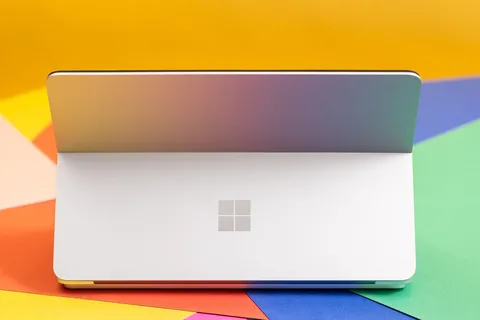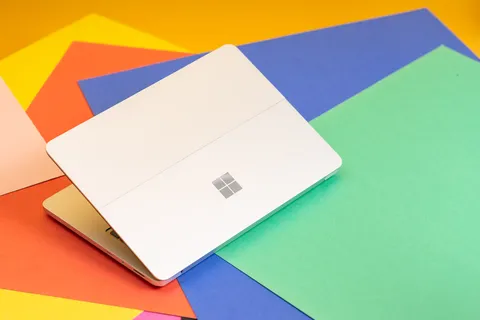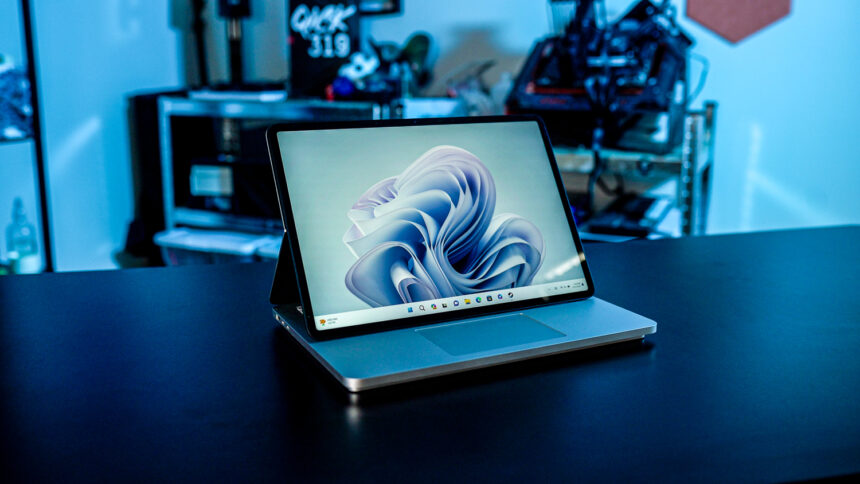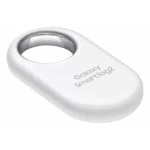Microsoft has refreshed its Surface Laptop Studio or, as I tend to call it in my head, “that big bendy, foldy thing.” It’s almost identical to its predecessor, 2021’s Surface Laptop Studio, with the unique fold-over hinge that allows the screen to stand in three different positions: clamshell, tablet, and tent (where the bottom edge of the screen rests right between the keyboard and the trackpad).
A variety of tweaks have been made. The trackpad has been redesigned, the screen now supports Dolby Vision HDR, some new ports have arrived, and hypothetical advanced AI stuff is coming at some point (but not now). The most significant updates are on the inside: the Laptop Studio now includes Intel’s 13th Gen Core processors and Nvidia’s RTX 4000 GPUs.

But the core of this laptop, and its pitch, remain the same. Setting aside the detachable Surface Book (don’t bring that up around me — I’m not over it), the Laptop Studio is the closest thing to a MacBook Pro competitor that exists in the Surface line. And it had better be a damn fierce competitor because the RTX 4060-equipped unit I’ve been testing, with a price tag of $3,299.99, is only $200 off of a similarly specced MacBook Pro with M2 Max. (The cheapest Laptop Studio 2 is $1,999.99, and it has 16GB of RAM, 512GB of storage, and integrated graphics — you can get an RTX 4050-equipped model starting at $2,399.99.)
The second-generation Laptop Studio does a lot to earn that steep price tag. It’s compact, it’s well-built, it has a touchscreen, and it bends and folds. Nevertheless, I can’t help but wish the Studio 2 offered a little bit more to the artistic audience that it courts. I wish this exceptional chassis had exceptional performance and battery life to match, especially for the price it’s asking.

The chips
The Surface Laptop Studio 2 unit I received for review is equipped with a Core i7-13700H, an RTX 4060 GPU, 64GB of memory, and 1TB of storage. This model is priced at $3,299.99, which, surprisingly, is only the third most expensive Studio 2 available. There’s a $3,699.99 model with a 2TB SSD, and a $3,599.99 option with 32GB RAM and a 1TB SSD, featuring an RTX 2000 Ada GPU primarily intended for tasks like large-scale production design, calculations, and simulation rather than applications like Blender and Premiere. A similarly specced MacBook Pro 14 with the M2 Max chip would cost $3,499.
It’s worth noting that the processor in this Laptop Studio 2 is not currently outdated, but it will become so in a few months. Intel has just announced its “Meteor Lake” CPU generation, expected to debut around December. While it’s not implied that Intel’s 13th Gen chips are subpar, the decision to incorporate them into this laptop at this moment seems somewhat perplexing.

The Surface line from Microsoft has a history of being behind in terms of processor technology. It raises questions about why Microsoft follows this annual release schedule instead of waiting for newer chips. However, this may not be an issue for devices like the Surface Pro and Surface Laptop, which cater to users who don’t heavily rely on the speed of their computers and aren’t willing to pay a premium for the latest and most powerful hardware in a portable form factor.
In contrast, the Laptop Studio is ostensibly aimed at professionals who require top-tier performance, where even slight differences in rendering, exporting, or compiling times can have a significant impact. Choosing the Studio over a future Meteor Lake machine in a few months could mean leaving a substantial amount of processing power on the table. While there will always be newer, more powerful chips on the horizon, the current situation doesn’t make it an ideal time to invest in an expensive 13th Gen laptop.

Regrettably, the benchmark results for the Studio 2 were less than impressive. To be clear, it does represent an improvement over the original Studio model. Whether you’re exporting videos in Premiere or playing Tomb Raider, it does perform faster. However, these performance numbers don’t stand out when compared to other high-end workstations available today.
When you consider the price tag, the MacBook Pro becomes a primary competitor here (as other non-gaming portable workstations like the Dell XPS 15 belong to a different category altogether). Surprisingly, the MacBook Pro consistently outperforms the Laptop Studio 2 in multicore benchmarks, despite the fact that the Core i7 powering the Studio has more CPU cores than Apple’s M2 Pro and M2 Max chips. (The benchmarks we have here are for the 16-inch MacBook Pro, but we’ve observed that Apple’s 14-inch models generally perform similarly to their 16-inch counterparts with the same specifications, except for battery life, which we’ll discuss later on.)
Surface Laptop Studio 2 benchmarks
| System | 4K Export Time | Cinebench R23 Multi | Cinebench R23 Single | Cinebench R23 Multi 30-minute loop | Geekbench 5 CPU Multi | Geekbench 5 CPU Single | Geekbench 5 OpenCL / Compute | Tomb Raider (1920 x 1200, highest) |
|---|---|---|---|---|---|---|---|---|
| Surface Laptop Studio 2 (Core i7-13700H / RTX 4060 / 64GB) | 0:02:25 | 13036 | 1823 | 13204 | 12498 | 1808 | 98508 | 101fps |
| MacBook Pro 16 (M2 Max, 12-Core CPU / 38-Core GPU / 64GB) | 0:01:38 | 14757 | 1684 | 14796 | 15071 | 2037 | 70217 | 103fps |
| MacBook Pro 16 (M2 Pro, 12-Core CPU / 19-Core GPU / 32GB) | 0:04:32 | 14757 | 1641 | 14757 | 15033 | 1961 | 45139 | 58fps |
This advantage became evident in our real-world testing. The M2 Max proved to be nearly a full minute faster in our Premiere Pro export, which is a CPU-intensive task. The Laptop Studio achieved a score of 543 on PugetBench for Premiere Pro, which is roughly in line with what we’d expect from the (and notably more affordable) M2 Pro MacBook, but it falls notably short of the performance of the M2 Max. While the dedicated RTX 4060 certainly provides the Studio with added raw graphics power, the impact of this advantage varies depending on the specific task. For instance, during the Shadow of the Tomb Raider test, the Studio and the M2 Max performed at a similar level.
However, the most significant drawback for the Surface at this price point is its battery life, which falls far short of what Apple can provide. On average, I managed to get only about four hours and 19 minutes of continuous use out of this device even with Battery Saver mode enabled. And it’s important to note that my usage wasn’t demanding; I was mainly typing in Google Docs. Surprisingly, this is almost identical to the battery life we saw on the previous Studio model, which featured an RTX 3050 GPU and was priced at $2,699.99 in its tested configuration.

While there are individuals who may not prioritize all-day battery life in their personal workstations, the target audience for the Laptop Studio 2, which includes digital artists, requires the flexibility to use their devices on the go. In contrast, I would expect a 14-inch MacBook to provide well over twice the battery lifespan. It’s worth highlighting that this battery issue is not unique to the Studio 2 but is a consistent problem across Intel’s offerings. This underscores the risk of opting for this convertible laptop instead of waiting for a Meteor Lake workstation, as Intel has promised substantial battery life improvements with its next-generation processors.
As an interesting comparison, the last product I reviewed with a shorter battery lifespan than this was the Asus ROG Strix Scar 17, one of the most powerful gaming laptops ever made. Priced at $3,499.99 (just $200 more than this Studio), it featured an RTX 4090, Nvidia’s top-of-the-line graphics card, and lasted about three hours on a charge. However, it significantly outperformed Apple’s M2 Max in GPU benchmarks. The Surface Laptop Studio 2, on the other hand, does not achieve that level of performance. To be clear, I’m not suggesting that a 14-inch convertible laptop is comparable to Asus’ seven-pound gaming beast; I’m simply highlighting the type of performance you should expect from the Studio given its $3,300 price tag.

Despite its distinctive form factor and the efforts of its creators to position it as a novel and distinct product, the Laptop Studio 2 is undeniably a Surface at its core. While its chassis offers innovative features, its internal components fall into the mid-tier category. At a price point of $3,300, a battery life of just five hours is simply insufficient.
The rest
The upgrade that Microsoft has been emphasizing the most is the touchpad. The haptic trackpad introduces a new feature called Adaptive Touch. When activated, multitouch gestures are disabled, and the Studio 2 uses multiple points of contact moving in the same direction to determine the mouse’s movement. The aim is to provide a more accessible experience for individuals who may have limited dexterity or need to navigate using appendages other than just their fingers, without requiring specialized setups.


This approach is commendable, and it’s something that other companies should consider when designing their products. Enhancing accessibility and customization benefits not only people with disabilities but also the broader user base. Well done, and we need to see more of these initiatives.
However, despite these positive aspects, this touchpad wasn’t my personal favourite. While the click was comfortable and superior to the somewhat thin and clunky sensations you get from smaller, cheaper Windows laptops that use haptic touchpads, I encountered difficulties when using the Studio 2 on my lap or on uneven surfaces. Clicks often didn’t register correctly when the Studio wasn’t on a flat surface. Even when the laptop was slightly hanging off the edge of my desk or resting on my lap desk, I sometimes had to repeat clicks because the first attempt didn’t register correctly and just made a thudding sound against the hard plastic. This is something that occasionally happens with the MacBook Pro I regularly use in these positions, but it was much more frequent with this unit.

The second major improvement concerns connectivity. In the previous year’s Studio model, there were only two USB-C Thunderbolt 4 ports, a headphone jack, and Microsoft’s proprietary Surface Connector, which was quite limited. However, this year, Microsoft has made some enhancements by adding an extra USB-A 3.1 port and a microSDXC card reader, which is a positive step forward. While it’s an improvement, it’s still not exceptional in comparison to other workstations, and the absence of a full-sized SD slot may disappoint many professionals who are willing to invest in a device of this caliber.
The Studio’s 14.4-inch touchscreen with a resolution of 2400 x 1600 now features dynamic refresh rate, allowing it to switch between 60Hz and 120Hz depending on your tasks. This is a welcome addition, especially for those who appreciate a smooth 120Hz scroll through extensive documents and spreadsheets. The Studio unit I received came preset at 120Hz, but if you prefer Dynamic Mode, you’ll need to access the settings and enable it manually.
Additionally, there are some minor improvements. The screen now supports HDR, including Dolby Vision. The 1080p camera now offers a wider field of view, although its practicality for video conferencing may not be immediately evident. Moreover, more AI-related features are expected to be introduced in the future.

The Laptop Studio 2’s standout feature, and the reason for its premium price, remains its flexible and foldable screen. However, this raises the question of whether this feature alone justifies the investment. The Surface Book, which the Studio replaced, was a unique form factor that offered gaming and creative capabilities. Still, it had its downsides, including being bulky, top-heavy, and prone to overheating. The tablet form factor had limitations, and eventually, it seemed Microsoft had reached its limits with it.








